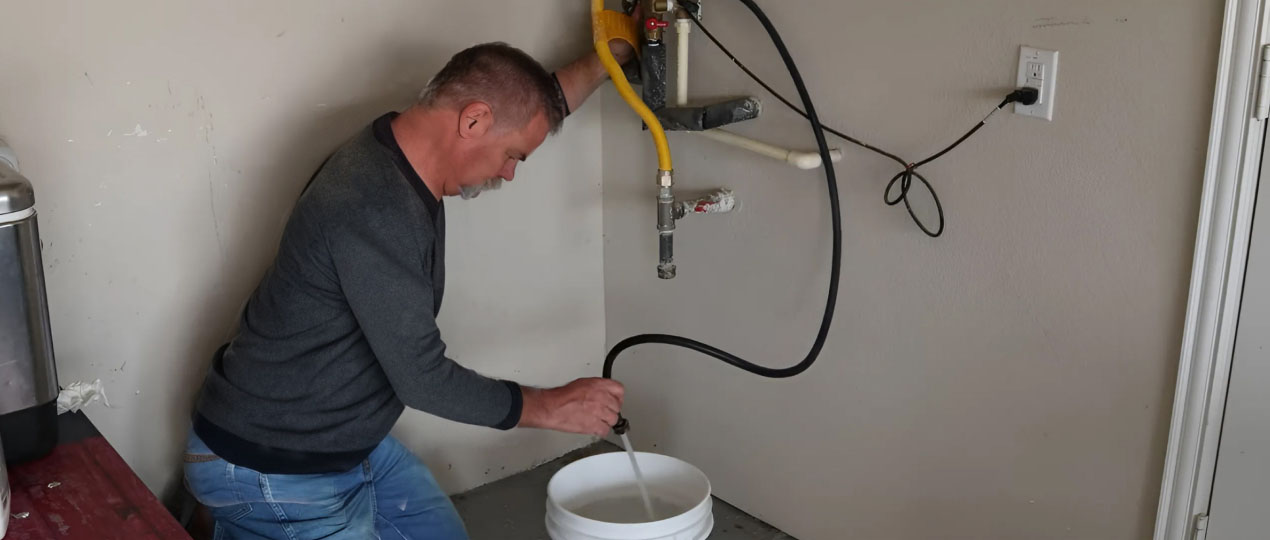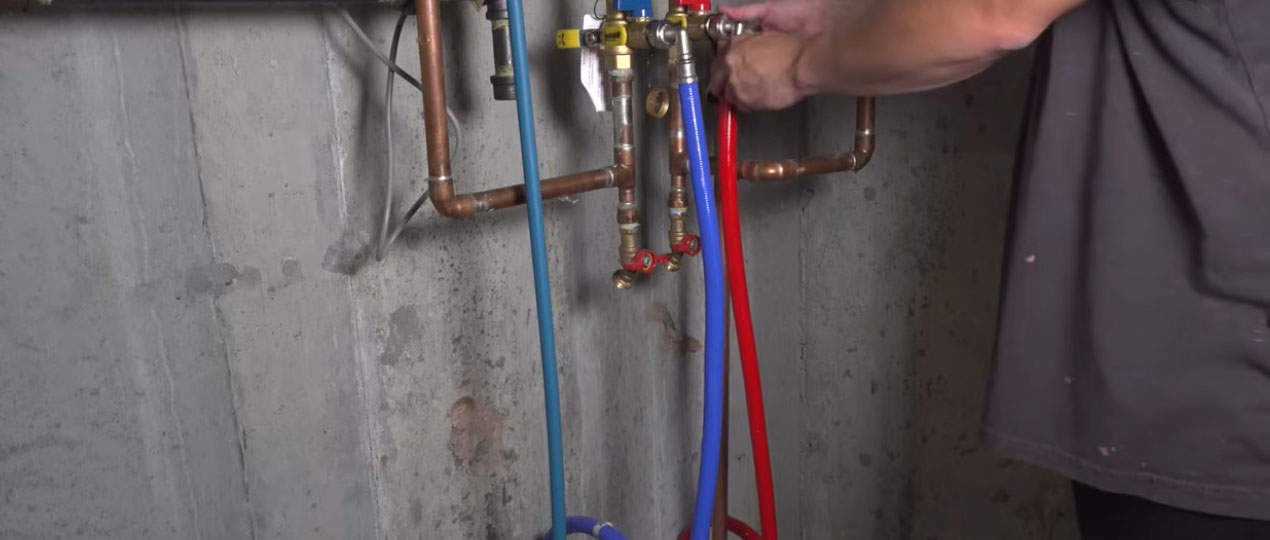
Maintaining a modern on-demand water heating system is vital for ensuring top performance and a long operational life. That’s where a proper tankless water heater flush comes into play. Unlike traditional storage tank models, tankless units heat water on demand, which can lead to mineral and sediment buildup if left unaddressed. By doing it at recommended intervals, you can preserve its efficiency, prevent potential damage, and even keep your energy bills in check.
What is a tankless water heater flushing?
A procedure involves running a descaling or cleaning agent through the internal components of your on-demand heating system. Over time, minerals such as calcium and lime can accumulate within the heat exchanger, hindering water flow and compromising performance. When you clean systems on a regular basis, you remove these deposits before they cause irreparable damage.
The core idea is to restore the water heater’s original capacity to transfer heat effectively and ensure minimal energy wastage. For homeowners, this translates into consistent hot water supply and stable water pressure, even in peak usage periods. The technique is straightforward: you introduce a descaling fluid into the unit, allow it to circulate, and then rinse until all traces of the cleaning solution are gone.
Why is flushing a tankless water heater necessary?
Overlooking can lead to costly consequences. Minerals and debris, such as limescale and rust, slowly form inside the heat exchanger. If not removed, these deposits obstruct water flow, reduce heating efficiency, and can even trigger system shutdowns. Moreover, accumulated scale demands more energy for heating the same volume of water, driving up utility bills. The overall service life of the heater extends significantly when you flush out tankless water heater components.
In essence, this routine upkeep makes for a more energy-efficient, cost-effective, and reliable home appliance:
- Improved water flow and pressure Boosting water flow and pressure depends on removing the blockages that naturally form in tankless systems over time. When sediment is thoroughly flushed away, water travels through pipes and heating components more easily, creating a stronger, more consistent stream. This ensures better hot water delivery for daily tasks, from refreshing showers to cleaning dishes effectively.
- Removal of scale and sediment buildup Eliminating scale and sediment deposits from your unit is essential for preserving optimal performance. Accumulated minerals interfere with heat transfer, raising energy consumption and increasing the risk of corrosion. By flushing a tankless water heater regularly, homeowners remove detrimental buildup, enhance water quality, and avoid costly repairs, ensuring a cleaner, more efficient system overall, year after year.
- Extended lifespan of the water heater Corrosive residues, if left unchecked, weaken essential components, leading to breakdowns or replacements. Addressing mineral buildup early allows the unit to operate smoothly, safeguarding heat exchangers and valves while maintaining optimal performance standards across extended periods of service.
- Increased energy efficiency By routinely flushing, homeowners reduce energy waste resulting from obstructed heat exchangers. When mineral deposits accumulate, more power is required to achieve the same temperature levels. Clearing away sediment permits hot water to flow seamlessly, boosting performance and lowering utility bills. Regular maintenance thus translates into tangible savings and system reliability.
If you want these benefits, consistent water pressure, lower energy bills, and a longer-lasting appliance, be sure to schedule regular flushing. For professional assistance, trust Superior HVAC Service to handle every aspect of your tankless water heater’s upkeep. Our certified specialists use advanced descaling techniques to keep your system in peak condition.
What to use for a tankless water heater flush?
Selecting the right tools is key to ensuring a smooth and effective flushing process. From durable hoses to specialized cleaning agents, each component plays a critical role in removing mineral buildup and restoring your water heater’s performance. Let’s dive into the tools you’ll need to get the job done right:
- Two hoses These hoses connect the system’s inlet and outlet to the circulation pump, facilitating the continuous flow of descaling solution. Made from durable, heat-resistant materials, they minimize leaks and ensure secure connections, ultimately promoting a thorough and reliable cleaning process during every flush cycle.
- Descaling / cleaning agent Choosing an appropriate descaling or cleaning agent is essential for dissolving mineral buildup in tankless water heaters. Specialized formulas break down limescale effectively without harming seals or metal components. When circulated through the heater, they penetrate hard-to-reach areas, preventing corrosion and restoring optimal performance.
- Submersible circulation pump It drives descaling fluid through the heater, dislodging stubborn deposits. Designed with corrosion-resistant components, it handles repeated use and hot liquids with ease. Its steady flow rate ensures thorough cleaning, protecting the heat exchanger from performance-threatening residue.
- Big bucket The bucket houses both the submersible pump and the descaling solution, allowing uninterrupted fluid circulation. Its ample capacity helps contain splashes and prevents spills, keeping the work area tidy. A sturdy, stable container also supports safety and convenience throughout the cleaning process.
Pro tip: Before purchasing these items, always check your heater’s manual first. Some brands (like Noritz) recommend specific flushing solutions to avoid voiding warranties.

How to flush a tankless water heater in 7 easy steps?
Proper technique not only maximizes cleaning but also safeguards against leaks or accidental damage. By carefully following each stage, you can achieve a thorough flushing that restores optimal efficiency. So, here’s how to flush a tankless water heater:
Step 1: Turn off isolation valves and gas
Locate the hot and cold water isolation valves connected to your tankless heater. Turn both valves to the off position. Also, shut off the gas supply or unplug the power source to ensure the unit does not heat water during the flush.
Step 2: Drain your tankless water heater
Place a bucket beneath the unit. Carefully open the purge valves to drain any water left in the system. This step helps expel stagnant water, making room for the descaling solution. Avoid direct skin contact with hot water by wearing protective gloves.
Step 3: Attach hoses to circulation pump
Connect one hose from the water heater’s cold water inlet to the submersible circulation pump. Then, attach the other hose from the heater’s hot water outlet and position the free end into a large bucket. Ensure all connections are snug to prevent leaks.
Step 4: Add cleaning agent
Fill the bucket with the recommended volume of descaling / cleaning agent mixed with water, as directed by the product instructions. Position your pump at the bottom of the bucket, fully submerged in the solution. This preparation readies the system for circulation.
Step 5: Open valves
Open the purge ports or isolation valves. Switch on the circulation pump so the descaling fluid can flow into the heater’s internal passages. Make sure the solution cycles seamlessly from the bucket, through the unit, and back into the bucket.
Step 6: Flush cleaning agent
Allow the solution to circulate for at least 45 minutes, or as specified by your descaling product. During this time, the fluid dissolves limescale and sediment. Afterward, switch off the pump and dispose of the used solution. You have effectively performed a flush.
Step 7: Restart your unit
Close all valves and remove the hoses, then reopen both the hot and cold water lines. Restore gas or power to the heater. Run hot water for a few minutes to rinse any residual cleaner. Your system is now primed for maximum efficiency and performance.
How often should a tankless water heater be flushed?
Many homeowners ponder how often should you flush a tankless water heater to maintain peak function. In general, manufacturers recommend performing a process at least once every 12 to 18 months. However, the specific interval may vary based on water hardness and usage patterns. For instance, homes in areas with extremely high mineral content might need to schedule flushing sessions more frequently, sometimes every six months.
If you notice signs like fluctuating water temperature, reduced water pressure, or unusual noises, a prompt flushing might be necessary. Stay proactive with routine inspections, and don’t overlook the value of professional guidance. Checking the manufacturer’s manual or consulting a specialist ensures you don’t risk damaging any delicate components.
Final thoughts
Flushing is crucial for preserving the performance and longevity of your system. By systematically removing limescale and sediment, you optimize energy efficiency, protect against mechanical failures, and maintain a steady flow of hot water. Whether you decide to handle the flushing process yourself or hire a professional, adopting a consistent maintenance routine can save you money in the long run.
For those seeking expert assistance, Superior HVAC Service stands ready to help with top-notch cleaning solutions and certified technicians.
We can handle various issues, ensuring your Water Heater works at its best.
Order the best specialist in Canada Now (866) 545-6460
REFERENCES
1. Hawes, J. K., Conkling, E. A., Casteloes, K. S., Brazeau, R. H., Salehi, M., & Whelton, A. J. (2017). Predicting contaminated water removal from residential water heaters under various flushing scenarios. Journal‐American Water Works Association, 109(8), E332-E342. https://doi.org/10.5942/jawwa.2017.109.0085
2. Rhoads, W. J., Bradley, T. N., Mantha, A., Buttling, L., Keane, T., Pruden, A., & Edwards, M. A. (2020). Residential water heater cleaning and occurrence of Legionella in Flint, MI. Water research, 171, 115439. https://www.sciencedirect.com/science/article/pii/S0043135419312163
